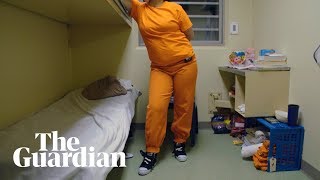Thursday, 18 December, 2025г.
















Где искать: по сайтам Запорожской области, статьи, видео ролики
пример: покупка автомобиля в Запорожье
1989 SPECIAL REPORT: "WOMEN DOING HARD TIME"
In the United States, authorities began housing women in correctional facilities separate from men in the 1870s. The first American female correctional facility with dedicated buildings and staff was the Mount Pleasant Female Prison in Ossining, New York; the facility had some operational dependence on nearby Sing Sing, a men's prison. In the 1930s, 34 women's prisons were built, by 1990 there were 71 women's prisons in the country, but only five years later there were 150 (Chesney-Lind, 1998:66).
Unlike prisons designed for men in the United States, state prisons for women evolved in three waves, as described in historical detail in Partial Justice: Women in State Prisons by Nicole Hahn Rafter. First, women prisoners were imprisoned alongside men in "general population," where they were subject to sexual attacks and daily forms of degradation. Then, in a partial attempt to address these issues, women prisoners were removed from general population and housed separately, but then subject to neglect wherein they did not receive the same resources as men in prisons. In a third stage of development, women in prison were then housed completely separately in fortress-like prisons, where the goal of punishment was to indoctrinate women into traditional feminine roles.[29]
According to an article published in 2018 from The Prison Policy Initiative, of the world’s female population only 4% live in the U.S.; however, over 30% of the world’s incarcerated women are in the United States.
The Prisoners in 2014 report by the Bureau of Justice Statistics determined that Black women make up 23% of incarcerated women in the United States. Black women comprise about 14% of the U.S. female population and because corrections agencies do not separate prisoner data by race and gender, “we rarely know how many of the black prisoners are women, and how many of the women are Black”.
Теги:
women prisons united states prison 1980s crack era hezakya newz hezakya womens jail women in prisons crack babies girls prisons
Похожие видео
Мой аккаунт


 У вашего броузера проблема в совместимости с HTML5
У вашего броузера проблема в совместимости с HTML5


